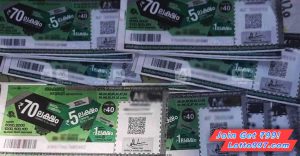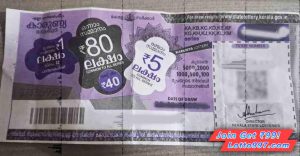
Many people fantasize about claiming the Powerball jackpot, envisioning a life of unprecedented financial ease. Yet, while the allure of Powerball is the possibility of millionaire status, the reality is harsh—odds stacking up against the player at an astronomical 1 in 292 million. That’s precisely the number of potential combinations lying between a player and their dream jackpot. To win the Powerball, you need the stars to align perfectly with your chosen numbers, and only one unique combination will lead to victory.
Despite the daunting probability, lottery enthusiasts continue to play, clinging to the sliver of hope that luck may shine on them. If one were to pursue a surefire victory, they would theoretically need to purchase every available ticket combination—a staggering total of around 292 million.
But what does it truly take to grasp the full breadth of Powerball combinations? A closer look at the game’s structure is essential. Powerball is a dual-drum lottery game, one drum housing 69 white balls and the other containing 26 red balls—the eponymous Powerballs. By successfully selecting five white ball numbers and the one red Powerball number that match the official draw, a winner is crowned.
The draw itself stirs excitement nationwide, as it’s televised live, showcasing the random selection of winning numbers for all to witness. The unpredictability is what gives the lottery its charm; the balls emerge at random, making each draw a mystery.
To fathom the number of combinations, one must apply mathematics, specifically the binomial coefficient formula. The process involves determining the number of ways to choose five white balls out of 69 and then one Powerball from 26. Multiply these two figures, and you unveil the staggering number of potential game outcomes.
In comparison to other lottery games, Powerball emerges as the giant, with its vast number of balls and expansive number range setting it apart—and also making it the most formidable lottery to conquer. Yet, the higher the risk, the more substantial the reward; the potential jackpot far surpasses those of other lotteries.
Purchasing every ticket to cover all combinations, which would cost upwards of $584 million, guarantees a win but renders the endeavor financially illogical for most, as the investment often outweighs the prize. And that doesn’t even scratch the surface of logistical difficulties or the time it would take to manually select and enter each combination.
Should someone be able to surmount the logistical mountain and invest the necessary fortune, they would face the cold truth that if the jackpot were shared or if they had to pay taxes, their outlay might eclipse the winnings. Thus, such a strategy is not just highly impractical; it’s often economically destructive.
But what about other strategies or lottery aids? Wheeling systems, quick picks, and other methods may aid in ticket selection, yet no approach offers a guaranteed win—each just a roll of the dice.
The Powerball’s Power Play option, which multiplies non-jackpot prizes, may sweeten the deal but does nothing to tweak the game’s inherent odds. Those odds remain immovable, regardless of additional bets or game modifiers.
So, how many tickets should one buy? Common sense and budget constraints dictate your best bet. While purchasing more tickets nominally increases your odds, it does so minimally when facing a 292-million combination behemoth.
A complete list of all possible Powerball combinations is virtually unobtainable due to its sheer size. Still, for those who wish to wrestle with the data, algorithmic software and complex programming could theoretically generate the sequence—though it presents a Herculean task.
Among the famed numbers, a few have appeared with greater frequency in Powerball’s history, yet relying on these seemingly ‘lucky’ numbers does not mathematically improve your odds of winning.
As for legendary lottery strategies like Stefan Mandel’s, they fall short with Powerball due to its vast number range and unfavorable jackpot-to-cost ratio.
For winners and dreamers alike, knowing where to find the results is crucial. Numerous online platforms offer updates, with options to purchase tickets online for those looking to try their fortune from afar.
With jackpots starting at $20 million and the potential to roll over to striking sums, the Powerball lottery stands as not just a game but a cultural phenomenon, captivating millions with the slim chance of life-changing riches. Those lucky enough to win face a new reality, navigating claims processes, tax considerations, and the sudden influx of wealth—an outcome as unpredictable as the game itself.











